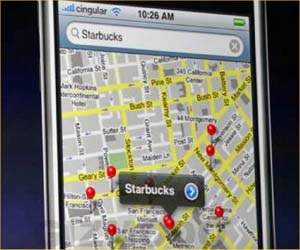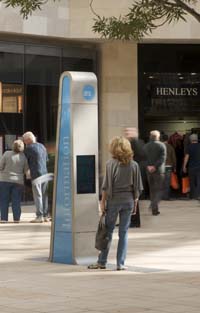Is there any point in taking a long-term view of signage, wayfinding & legibility strategy anymore? Given the increasing prevalence, affordability, function and adoption of smart phones, it could be said that the humble street sign is no longer a pertinent solution. It’s hard not to agree with the above, (even for a signage manufacturer!) but the future is actually much more clouded with uncertainty and is less definitive. However, signage must adapt to continue to add value in our public realm.
The problem with crowd-sourced content
Our recent round table with a large group of multiple stakeholders in the public sector threw up the helpful suggestion that “people make places” and as such a signage content strategy should start with the community.
However, the inherent subjectivity of content derived from this method is a problem.
Crowd-sourced (or should that be cloud-sourced?) content isn’t a meritocracy and, by the very nature of the complexity of technology, certain segments and socio-economic groups of the populous will be represented without balance. This lack of equilibrium matched with other solely commercially driven interests therefore undermines the accessibility and inclusivity of our public space.
Inclusivity & Exclusivity
Expanding on the above, there are many groups that simply cannot use the smart-phone navigation. From the visually-impaired or physically-impaired through to those who don’t wish to foot the bill to stream large volumes of data through currently expensive mobile phone operators – smart phone signage isn’t for everyone.
Safety
In many inner city areas, walking along with a desirable smart phone aloft for all to see, especially in the dark when the item is lit, could make you a target for theft. Additional modern developments of mapping and navigation, such as augmented reality, only serve to compound this further.
Replacing traditional signage simply isn’t suitable for many users, especially the most vulnerable in society.
Another safety consideration is addressing the numerous other difficulties in navigating the public realm without 100% attention being given to the other users, cars, cyclists and more who use our streets.
Embracing & Adapting to Technology
The use of technology in wayfinding should become more integrated between on and off line, physical and digital, incorporating both the community and client (local authority) ambitions.
It was only a few years ago that the appetite for the integration of technology led to the hurried development and implementation of on-street kiosks with touch screens, however these have often proved expensive to maintain and limited in the information that can be delivered.
We encourage clients to match a strong content management system with long-term aforethought, so that physical signs can truly add value in collaboration with smart phones. Taking care not to preclude all users of the public realm, an integrated approach serves a wider audience and more varied need. This also means the physical signage will not become an outdated a fit and forget solution.
One such method would be to fit signs with barcodes (or QR codes) which can be scanned by the visitor. This then directs them to web based material which can add a huge amount of value to both residents’ and visitors’ public realm experience.
Examples of the content can be varied, from information on interpretation to engaging what’s on guides, tourist information, temporary events, bookings and local transport schedules.
By employing this method, the information needs to be changed at the web site management system and not on the physical signs. This ensures a cohesive set of information for people planning a visit to the area, and for people already amongst it!
This is simply one idea to integrate these two exciting worlds.
We’d love to talk to you further to discuss these possibilities with an open mind and our 25 year history of bespoke product design and installation service.





